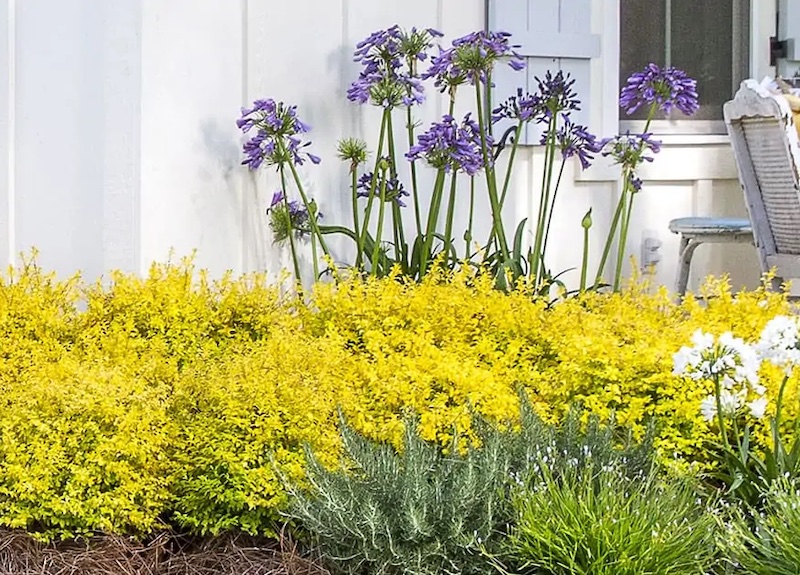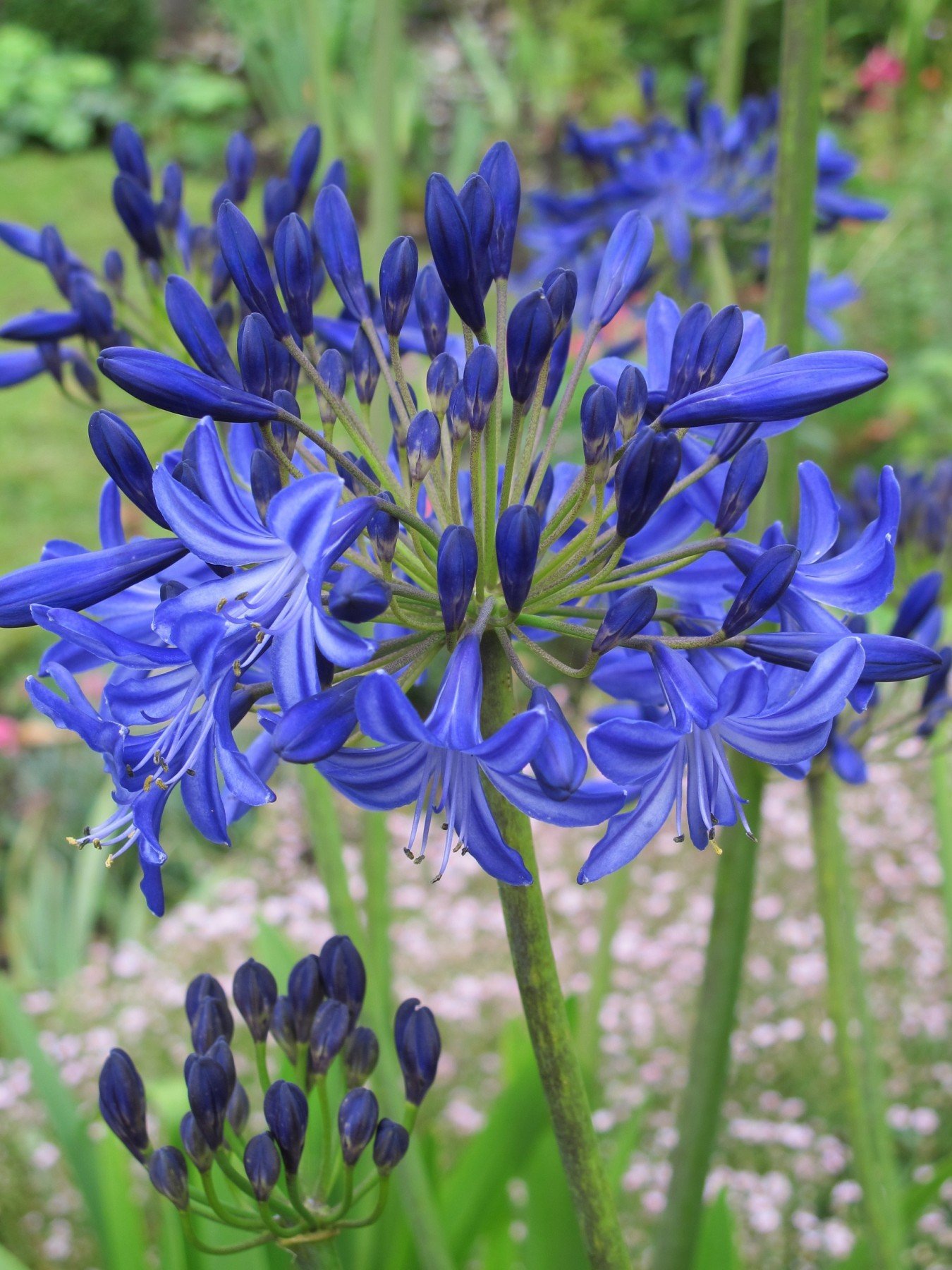Agapanthus Varieties: Selecting the very best for Your Landscape
Agapanthus Varieties: Selecting the very best for Your Landscape
Blog Article
Letting Loose the Secret to Successful Agapanthus Cultivation: Idea for a Flourishing Garden
In the world of gardening, cultivating agapanthus effectively requires a critical technique that encompasses various aspects of plant treatment. By comprehending the nuances of agapanthus cultivation, one can produce an atmosphere where these plants grow and flower generously.
Planting Agapanthus: Best Practices
When growing Agapanthus, appropriate soil prep work is crucial for making sure effective development and development of these attractive flowers. Agapanthus, frequently called Lily of the Nile or African lily, prospers in well-draining soil with a somewhat acidic to neutral pH level - Agapanthus. Prior to planting, it is essential to change heavy clay soils with natural issue such as compost or peat moss to improve drainage and provide important nutrients for the plants
To grow Agapanthus, pick an area that receives complete sunshine to partial color, as this will advertise healthy growth and plentiful blooming. Dig an opening two times the size of the plant's origin sphere and position the Agapanthus at the same deepness it was formerly growing. Carefully backfill the hole with soil, pushing down securely to remove any kind of air pockets around the origins.
Water the newly grown Agapanthus completely and proceed to maintain the soil evenly moist, especially throughout the plant's active expanding period. Agapanthus. Applying a balanced fertilizer once a month can additionally support the plant's development and flowering. By following these finest methods for growing Agapanthus, you can develop a spectacular screen of these fascinating flowers in your garden
Perfect Dirt Conditions for Agapanthus
For optimal development and growing success of Agapanthus plants, making certain the dirt conditions are excellent is essential. Agapanthus likes soil that is rich in nutrients, so incorporating a balanced plant food throughout the growing season can promote healthy growth and vivid flowers.

Watering and Feeding Tips
To ensure healthy development and dynamic blossoms, appropriate watering and fertilizing techniques are essential for effective Agapanthus farming. Agapanthus plants benefit from normal watering, particularly throughout the growing season.
When it concerns fertilizing Agapanthus, a balanced plant food with equal parts nitrogen, phosphorus, and potassium can be applied in the springtime to advertise healthy and balanced growth and flowering. Slow-release plant foods are excellent for supplying nutrients slowly over an extensive period. Prevent over-fertilizing, as this can lead to extreme vegetation development at the cost of blooms.
Additionally, incorporating natural issue like compost into the dirt can improve nutrient degrees and improve soil structure, aiding in the overall health of the Agapanthus plants. By adhering to these watering and fertilizing ideas, garden enthusiasts can guarantee their Agapanthus plants flourish and generate stunning displays of flowers.
Pruning and Deadheading Strategies
Appropriate pruning and deadheading strategies play an essential duty in maintaining the wellness and visual have a peek here appeals of Agapanthus plants, matching the necessary techniques of watering and feeding for successful growing. Trimming Agapanthus involves getting rid of spent flower heads, dead or yellowing fallen leaves, and total shaping of the plant to promote far better growth. Deadheading, the procedure of getting rid of try this site faded flowers, not just enhances the plant's appearance however additionally urges additional blooming.
When deadheading Agapanthus, it is suggested to clip off the flower stem at the base using sharp, clean shears. This procedure reroutes the plant's power from seed manufacturing back into origin and foliage growth, advertising a much healthier and more durable plant. Normal deadheading can expand the blooming period of Agapanthus and prevent self-seeding, which can lead to overcrowding.
In regards to trimming, Agapanthus normally advantages from a light trim after blossoming to tidy up the plant and encourage fresh development. Reducing the invested blossom stems and eliminating any dead or damaged foliage helps preserve the plant's vigor and overall appearance. Nonetheless, it is important to stay clear of cutting right into the crown of the plant, as this can compromise its health.

Protecting Agapanthus From Pests and Diseases
Applying reliable bug and disease administration approaches is essential to guarding the health and vitality of Agapanthus plants in farming. One usual parasite that affects Agapanthus is the Agapanthus borer, a caterpillar that tunnels into the plant, creating damage to the fallen leaves and flowers.
In enhancement to parasites, Agapanthus are susceptible to illness such as origin rot and fungal leaf areas. By remaining watchful and attending to insect and illness problems promptly, garden enthusiasts can aid their Agapanthus thrive and flourish.

Verdict
Finally, effective growing of agapanthus needs appropriate growing techniques, excellent dirt conditions, ample watering and feeding, regular trimming and deadheading, and protection from conditions and parasites. By complying with these techniques and ideas, gardeners can make certain a prospering yard loaded with attractive agapanthus flowers. Agapanthus. Keep in mind to maintain regular care and interest to detail to advertise the wellness and durability of these spectacular plants
When growing Agapanthus, correct dirt preparation is necessary for making sure effective growth and advancement of these gorgeous blossoms.Water the freshly planted Agapanthus completely and continue to maintain the soil evenly moist, especially throughout the plant's energetic growing season.For ideal development and flowering success of Agapanthus plants, making certain the soil problems visit this page are perfect is vital. When transplanting or growing Agapanthus, make certain the soil is well-prepared to offer the needed foundation for the plants to develop themselves effectively. One common insect that affects Agapanthus is the Agapanthus borer, a caterpillar that tunnels into the plant, causing damages to the leaves and flowers.
Report this page